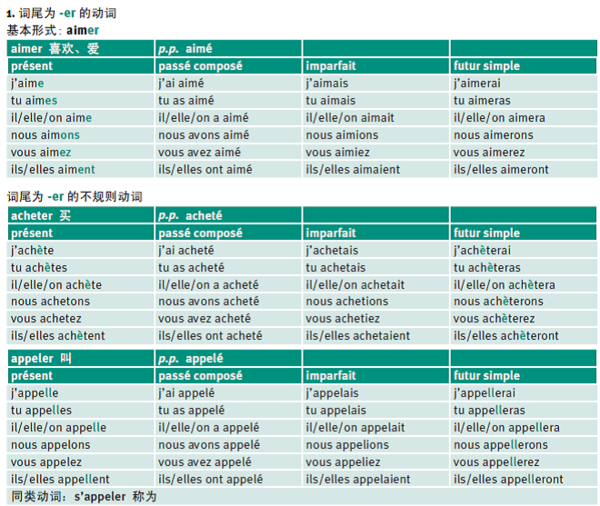How to master the grammar of any language hardcore and effectively?
I only wrote one article last month, ashamed and ashamed. It's not because I'm so busy, but because I 'm too lazy to find anything to write about like a bunch of slimes . It’s already December in a blink of an eye, and I feel a little sorry for the goals I set for myself if I don’t write anything, so I want to talk about language learning.
Language learning is probably one of the few hobbies that can be cultivated at zero cost as long as you have energy and time. Once you enjoy the fun of language learning, the learning process that ordinary people find boring and annoying can become interesting. Whether it is language, sports, painting, programming or any other hobby, as long as you can persist, there will be more or less results.
For many people, grammar will always be a hurdle in learning a language by themselves. Taking English as a school subject for example, many students memorize grammar knowledge points by rote without a basic understanding of the English grammar framework. There are also some popular methods of strengthening language skills through extensive communication with native speakers. Although it is true that you can achieve fluency in a foreign language in a short period of time, if your pursuit is not as simple as "being able to communicate with people in a foreign language", There will be many problems in the future. I have indeed seen people who have not learned any grammar systematically but can use a foreign language perfectly regardless of listening, speaking, reading and writing, but 80% of them may be children younger than 10 years old, and the other 20% are talents that you will never catch up with in your life The clever son of God's Chosen. So as an ordinary person, you might as well give up the idea of painless language learning and start from the basic skills.

Note: I am not an expert in linguistics. The following content is not professional, but just my personal thoughts. If there are any mistakes, please point out
Note 2: For easier reading, all non-Chinese characters will be converted to Latin alphabets
Basic classification
The first step in getting started with the grammar of any language is to understand its structure. First of all, we can divide languages into three categories: inflectional languages, agglutinative languages, and isolating languages.
- Inflectional language : has a large number of complex inflections, and the morphemes are inseparable. Representatives: Russian, French, German
- Adhesive language : Affixes are added before and after the root, and the affixes have only one grammatical function. Representatives: Japanese, Turkish, Mongolian
- Isolating language : lacks inflection, has a lot of function words and compound words. Representatives: Chinese, Vietnamese, Thai
The last type of complex language, which is mainly composed of Indian languages, I estimate that very few people will learn it, so I will ignore it for the time being.
word order
After determining the structure of the language, the second step is to determine its word order. You can think of grammatical structure as a mathematical equation, all complete sentences in a language are nothing more than 1(subject)+1(predicate)=2 or 1(subject)+1(predicate)+1(object)=3 changes . Common predicates contain verbs, verb phrases, adjectives, or adjective phrases.
To give a few examples:
- English
I eat. I eat a cake. I eat a delicious cake on my birthday. (I eat. I eat a cake. I eat a delicious cake on my birthday/I eat a delicious cake on my birthday)
English adopts the subject-predicate and SVO (active object) structure, the adjective is placed in front of the noun, and the preposition can be placed at the end or the beginning of the sentence. The last sentence is 1 (I) + 1 (eat) + 1 (a cake) x2 (delicious) + 1 (on my birthday) = 5, adding an adjective describing the object on the basis of the subject-verb-object (3) (x2) and prepositions (+1).
- Japanese
Bi は song う. He は歌を歌う. He は音楽室でlemonという歌を歌う. (He sings. He sings/He sings. He sings a song called lemon in the music room/He sings a song called lemon in the music room)
Japanese uses the subject-verb and SOV (subject-object-verb) structure, the preposition is placed after the subject, and the noun is matched with という to modify the object. The last sentence is 1 (彬は) + 1 (音楽室で) + 1 (歌を) x2 (lemonという) + 1 (歌う) = 5, adding the intermediary relationship on the basis of the subject-verb-object (3) word (+1) and noun describing the object (x2).
- Filipino
Nagsusulat ako. Nagsusulat ako ng isang libro. Nagsusulat ako ng isang kagiliw-giliw na libro nang mabilis. (I write/write me. I write a book/write me a book. I write an interesting book quickly/ write me an interesting book fast)
Filipino uses the predicate-subject and VSO (verb-subject-object) structures, adverbs can be placed at the end of sentences or follow verbs, and adjectives can be placed before nouns. The last sentence is 1 (Nagsusulat) + 1 (ako) + 1 (ng isang libro) x2 (kagiliw-giliw) + 1 (mabilis) = 5, adding the description of the object on the basis of subject-verb-object (3) Adjectives (x1) and adverbs describing verbs (+1).
In addition, there are some languages that are not fixed in structure. For example, the second order of verbs in German and Dutch (verbs always rank second in the sentence structure in declarative sentences) and noun sentences and verb sentences in Arabic (see which element is emphasized and which one is advanced).
Learning a language is like learning mathematics, memorizing formulas is useless . These two small formulas just help people decompose the sentence to find the center of the sentence, and then stack various modified words or more complex clauses on top like building blocks . But it is very important to figure out the subject-verb-object order of the language, so that you will not make some basic mistakes of inversion of word order, and you will not know where to put the subject and object because of adding a few modifiers in the future learning process.
out of shape

Except for a few isolating languages, almost any language in the world cannot escape deformation. Adhesive languages such as Japanese and Korean are not bad, but if you encounter highly inflected languages like Russian, where adjectives, verbs and nouns change wildly and are huge and irregular, you can only rely on reaction to 30% in daily communication and luck to 70% up. There is no shortcut to such a tormenting thing as deformation. Only by reading and using it can you master it proficiently. If necessary, you can memorize a few simple example sentences to strengthen the impression, until you can immediately judge the deformation according to the preceding and following words.
However, many people still complain that they can't recite the inflection at all, and can't remember what type of word follows which case. In fact, except for some insane languages, the deformation of most languages is relatively regular, the key depends on whether you can find it.
Take the man-made language Esperanto as an example. The plural of Esperanto always ends in j, the adjective always ends in a, the past tense always adds i to the root, etc., very regular. Unlike Esperanto, natural language is more changeable and does not "nakedly" put the rules in front of your eyes, but it can also be said to be an "extended version of Esperanto grammar" in essence.
Take Persian, which has a low degree of inflection, and the plurals just mentioned as examples. Persian plurals have the following categories: endings with ha, endings with an (which change depending on the final vowel/consonant), and special inflections of Arabic loanwords. You can imagine a tree branch , nouns can be expanded into indirect case and nominative case, and the two cases can be expanded into the above deformations, among which adding an will expand into more deformations. Esperanto is also a branch, but after expanding the nominative case and the accusative case, it will only expand into another deformation.
Of course, you can remember without branches, just use the fields you are familiar with. For example, social class distribution, lvm scrolls and other weird methods.
More advanced grammar may not use the above method, but it can be remembered by observing the similarities between grammars that use the same declension. Other than that I can't help.
long sentence
When you break through the basic grammar, what awaits you will be long and difficult sentences that make people feel headache. Here we have to use the 1+1=2 and 1+1+1=3 formulas we just used to split long sentences for easy reading. Let's start with the English that everyone is most familiar with.
"But, for a small group of students, professional training might be the way to go since well-developed skills, all other factors being equal, can be the difference between having a job and not." (However, for a small group of students Professional training is also an advisable path. All other things being equal, good skills are the key to getting a job.) *Sentence source Hujiang English
First of all, when we see the coordinating conjunctions but and since, we can hide all the following sentences from reading. In this way, only "professional training might be the way to go" is left, which can be divided into 1 (training) x2 (professional) + 1 (might be) + 1 (the way) x2 (to go) = 5. to go is a modification of the way. Then look at "but, for a small group of students", this sentence is easy to understand, it is to indicate the object that the author will talk about next. Then there is "since well-developed skills, all other factors being equal, can be the difference between having a job and not." This sentence seems a little difficult to understand, and it is worth dismantling in more detail. Find the subject-verb-object, that is, "skills can be the difference", and then divide it slowly. The predicate and object are easy to find, but why factors being equal is not the subject? Because if this is the subject, the well-developed skills behind since will be isolated and semantically unreasonable. The formula is 1(since)+1(skills)x2(well-developed)+1(factors)x3(all other, being equal)+1(can be)+1(the difference)x2(between having a job and not)=9.
Let's break down the Hindi language again, so there is no need for a formula to save words.
“Pahle to use aapne aap pataa chal jaataa thaa ki milne vaale aa rahe hain, par ab jaise uske dil kee aavaaz bhee band ho gaee thee, jo use unke aane kee suuchna de diyaa kartee thee.” His men are approaching, but now the inner voice that told him they were coming seems to be shut off.) *Sentence source Intermediate Hindi Reader
Also look for the main clause first, and when you see the coordinating conjunction par and the two subordinate clause conjunctions ki and jo, cross out the following sentence, leaving the main clause "Pahle to use aapne aap pataa chal jaataa thaa". This sentence has no subject ("he" is the subject in the translation, but it is only "for him" in Hindi), pahle to represents time, aapne aap is equivalent to oneself, and the verb is pataa chal jaataa. Look at the contents of ki, par, and jo respectively. Ki is followed by what he realized, that is, "the people who came to see him are approaching"; par is followed by his inner state, that is, "it seems to be turned off"; and jo is modifying his heart voice, that is, "Send him that they want to come."
Summarize
Learning grammar well is very helpful for reading, writing, listening, and speaking. Don’t think that grammar is just a cancer in exam-oriented education . It’s just a problem with the teaching in the school, which makes students unable to digest it.
The steps to fully understand any grammar are as follows:
- Find the basic categories (adhesive, inflectional, or isolating?)
- Determine the word order (what is the order of subject predicate and object? Or do they have no fixed position?)
- Back + use! (You can clarify your thinking by sorting out different types of grammar)
- Analyze long and difficult sentences (find the main clause, analyze the sub-sentences, and finally connect them)
My original intention was to include as many types of languages as possible, but because I am not very familiar with isolating languages other than Chinese, I am confused, but the basic learning process is similar.
Finally, I wish you all success in your studies.

Like my work? Don't forget to support and clap, let me know that you are with me on the road of creation. Keep this enthusiasm together!
